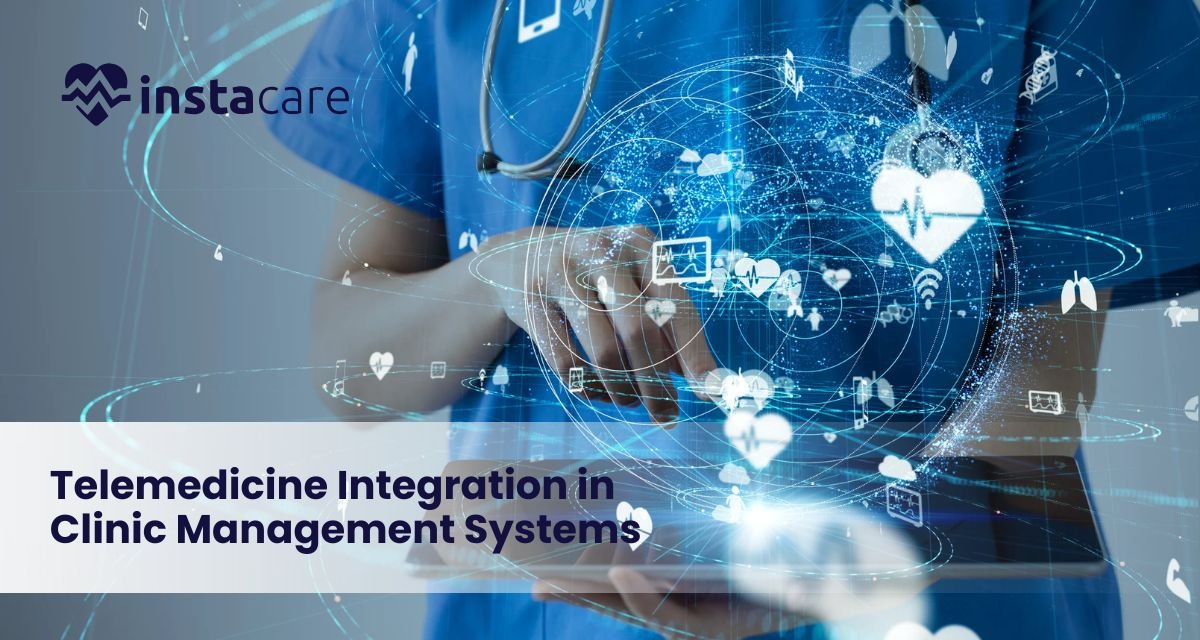Last updated on Wednesday, 13, November, 2024
Telemedicine is in one of the most rapidly emerging fields of modern health care system that exists in the present day. As the COVID-19 pandemic shut the world, Telemedicine has proven to be effective, and for those who wish to make patient care effective and of good quality for their patients, incorporating Telemedicine into the clinic management systems have become compulsory. This blog includes an analysis of the advantages and disadvantages of implementing telemedicine, an example of the copying of best practices into a federal program like CMS, and potential strategies for using this innovation to improve the delivery of healthcare services.
Table of Contents
What is Telemedicine?
Telemedicine is the practice of remote healthcare. In modern telecommunication, telemedicine encompasses various applications including but not limited to:
Video consultations
Two-way, real-time video communications between patients and health professionals.
Asynchronous messaging
The use of secure messaging for non-urgent questions and concerns.
Health monitoring from outside of a clinical environment using different types of devices.
Telemedicine has transformed patient care with regards to access, reduced travel time, and improved interest among patients.
Benefits of Implementing Telemedicine in Clinic Management Systems
1- Patient Accessibility
Geographic Reach: That have all the remote or underserved populations due to distance or mobility problems and for other reasons cannot access the traditional healthcare services.
Flexible Scheduling: Virtual appointments could be scheduled at the convenience of the patient, reducing barriers to receiving care and ensuring better adherence to the said treatment plan.
2- Efficiency and Workflow
Streamlined Operations: Clinic Management Systems integration of telemedicine can allow for the automation of appointment scheduling, reminders, and follow-ups that ease administrative burdens in staff.
- No-show rates decline: telemedicine visits may minimize no-show rates since patients tend to attend when a session can be done from home.
- Lower Overhead Costs: Telemedicine decreases the need for offices and amenities connected with it, for example, power, water, and repairs.
- Reimbursement from Insurance Companies: Telemedicine services are also today affiliated to many insurance companies. Hence, for clinics, after a virtual visit has taken place, financial compensation is possible, which makes telemedicine financially reasonable.
3- Increased Patient Activation
Direct Communication: Telemedicine creates a direct channel between patients and providers, urging patients to become activists in their management of healthcare.
Availability of Educational Materials: A clinic shall allow patients to access educational material through their Clinic Management Systems. This equips them for self-management and preventive care.
4- Continuity of Care
Ongoing Monitoring of Chronic Conditions: Telemedicine will make sure that patients’ chronic conditions are monitored continuously. This will allow the health-care provider to make appropriate changes in treatment at once.
Seamless Handover: Telemedicine will integrate the systems to make sure that patient records and history are available on each. This will allow for seamless transfer from face-to-face to virtual care.
Trouble areas faced in the integration process of telemedicine
1- Technological Challenges
Infrastructure Requirements: Clinics require investment in high-quality internet connectivity, hardware, and software to support the activities of telemedicine.
Interoperability Issues: Integration with existing CMS and EHR may be complex and requires technical expertise.
2- Compliance to Regulation
- Licensing and Credentialing: There should be observance of the state and federal regulations governing telemedicine, including licensure requirements and patient consent measures.
- Privacy and Security: In this respect, patient data is highly crucial. A clinic needs to have appropriate safeguards against hacking and other malicious activities regarding security breaches in accordance with the Health Insurance Portability and Accountability Act of 1996 and other state and federal regulations.
3- Resistance to Change
- Employee Training: Health professionals and administrative staff might require training to get used to new technologies and procedures.
- Patient Acceptance: Patients would be against it because they do not comprehend the significance of the technology or quality that telemedicine will bring.
4- Virtual Care Limitations
- Physical Examination Limitations: Some conditions require an in-person examination and thus will not be entirely carried out through telemedicine.
- Technical Problems: Connectivity problems, software errors, and user errors can all tend to sabotage virtual consultations to the chagrin of both the patients and the practitioners.
Good Practice of Smooth Integration
1- Choose the Best Telemedicine Solution
- Compatibility: Ensure that the telemedicine solution is well integrated with the existing clinic management system and EHR.
- Ease of Use: An easy-to-use platform may facilitate higher adoption among patients as well as providers.
2- Train Staff and Providers
- Comprehensive Training: Ensure your staff and healthcare providers become comfortable using the telemedicine solution.
- Employee Staff Support System: Establish a staff support system that the staff will be able to use with technical questions or concerns upon making a switch.
3- Patient Awareness
- Resource Material: Prepare resource materials for patients on how they can use telemedicine, the technology involved, and the advantages of virtual doctor visits.
- Promotion to Patients: utilize these channels to promote telemedicine services to patients: newsletter and social media.
4- Compliance and Security End
- Audits: Regularly audit your telemedicine practices to ensure they are complying with regulatory demands and areas that need improvement.
- Data Security Measures: Take rigorous security measures, including encryption and tight controls around access, in respect to patient data.
5- Collect Feedback and Improve
Patient Surveys: Take patient surveys and gather patient feedback on the experience when using telemedicine, and serve as the identified area of improvement.
Continuous Improvement: Change implementation based on patient and employee feedback to enhance the effectiveness of your telemedicine services.
Emerging Trends in Integrating Telemedicine
1- Artificial Intelligence and Machine Learning
AI and machine learning shall not only improve the diagnostics system in a telemedicine platform but also personalize patient engagements and make the administration more agile. The future, therefore, must definitely have a larger say of AI and machine learning.
2- Remote Patient Monitoring
Healthcare providers will make use of the wearable devices and technological advancements in remote monitoring to remotely track live data on a patient’s health metrics for proactive care and timely interventions.
3- Expanding Role of Telehealth
Telemedicine will also observe the majority of clinic’s services from a different scope including mental health advice, nutrition counseling, and chronic disease management among others.
4- Remote Patient Monitoring
The wearable devices and existing technology in the healthcare delivery system will be used to capture live data of physical status of the patient through tracking gadgets from healthcare providers for purposes of early detection, and timely interventions.
Conclusion
Indeed, the inclusion of telemedicine in the management of clinics allows one to increase access to patients, and at the same time, make the service more efficient and cost-effective. However, technological barriers and regulatory compliance issues exist along with a lack of willingness to change. If best practices are properly implemented, healthcare providers can have an easier and smoother integration of telemedicine to ensure better quality care given to their patients.
As telemedicine continues to grow, embracing this technology will be important for any clinics looking to remain competitive within an ever-changing healthcare landscape.
(FAQs)
1- What types of services can be delivered via telemedicine?
Telemedicine can provide services like routine checkup services, follow-up visits, mental health counseling, and chronic disease management. It also includes urgent care. However, it cannot provide physical examinations.
2- How do you safeguard the privacy and data of patients in the telemedicine setup?
Some of these security measures implemented by clinics will benefit their privacy and ensure the security of data. These include encryption and secure controls over the access to the applications, as well as regular audits of their telemedicine practices so as to ensure that they are at par with the set regulations, for example HIPAA.
3- Which factors should the vendors of the telemedicine platforms include in their products to attract clinics?
The clinics, therefore, should take into account the following factors while deciding on a telemedicine platform: compatibility with other systems in use, usability degree that is permissible, support and training offered, and the number of features available to meet their needs.



